
We create the Ultimate Bucket List for travelers who want to see the world's best events.
2018 Indy 500
May 27, 2018

It's not too early to start planning for your VIP trip to the Indianapolis Motor Speedway.
Let us provide you with a total VIP experience; Including
Track lap in Offical Pace Car, Track walk and "Kiss the Bricks" opportunity,
Guided Tour od IMS Hall of Fame Museum, Pre-Race Pit Pass, Post-race
Victory Podium Access, Private group dinner with Racing Legend,
Friday Cocktail Hour and Dinner, Transportation to track,
and much more.
2 Night Hotel Packages: May 26 - 28, 2018
Hampton Inn, Standard Room
From $ 605 USD p/p
3 Night Hotel Packages: May 25 - 28, 2018
Hyatt Regency, Deluxe
From $ 1255 USD p/p
4 Night Hotel Pacakges: May 25 - 29, 2018
Omni Severin, Deluxe
From $ $ 2645 USD p/p
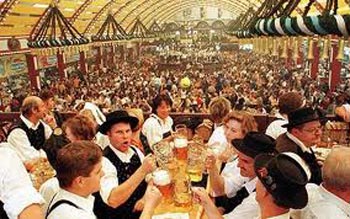 Octoberfest in Munich
Octoberfest in Munich
The Munich Oktoberfest (Munich Beerfest) is one of the most famous events and the world's largest fair.With some six million people attending every year, it is an important part of Bavarian culture. Think Disneyland for adults. Think must do!
Munich's Oktoberfest began life as a wedding for the Bavarian crown prince Ludwig to princess Therese from Saxony-Hildburghausen (hence the name of the Theresienwiese) on October 12, 1810 and attended by the local community. Today the Munich Beerfest traditionally takes place during the sixteen days up to and including the first Sunday in October.
4- Day Deluxe Hotel Package - From $ 1,099.00 per person, based on double occupancy. Airfare Extra.
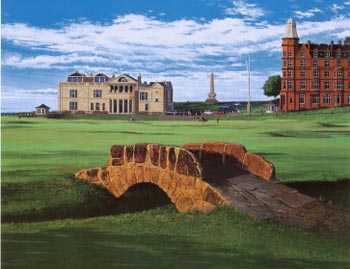 Golf the Hallowed Grounds of St Andrews - The Home of Golf
Golf the Hallowed Grounds of St Andrews - The Home of Golf
This sandy soil has felt the caress of hand crafted clubs of hickory and blackthorn and suffered the sharp assault of today's flashing blades.
Since as early as 1691, when St Andrews was described as "the metropolis of golf", the Auld Grey Toon on Scotland’s east coast has been regarded as the game's spiritual home. Indeed, the very first minute of the Society of St Andrews Golfers, later to become The Royal and Ancient Golf Club of St Andrews, refers to the town as the 'alma mater' of golf.
As legend has it, the game has been enjoyed en masse on the links since the 12th century, when shepherds would knock stones into rabbit holes with rudimentary clubs. And it was reputed to be a popular pastime when the University of St Andrews was founded in 1413.
Indeed, by 1457, the popularity of the game had reached such a level that King James II outlawed it for taking men away from their archery practice: the Act of the Scottish Parliament describing "golfe" along with "fute-ball" as "sik unprofitable sportes".
In 1552, on the proviso that Archbishop of St Andrews, John Hamilton, was able toretain possession of the rabbits on the course, the town's right to play golf on the links was officially established.
Fast-forward 200 years and the custodians of the course, later to become the Old Course, were the Society of St Andrews Golfers. They took the decision to reduce the number of holes from 22 to 18, so creating the format that would come to represent the standard course layout the world over. From then on, The Royal and Ancient Golf Club, and now The R&A, has been at golf's side as it has evolved and developed into the game we know today.
St Andrews, however, and its Old Course, has witnessed every single change in the game over its 600-year history. Nobody has described this unique sporting relationship better than the famous golf writer, historian and St Andrewan, Keith Mackie, who, in his book Golf at St Andrews writes:
"This sandy soil has felt the tread of every great champion; it has flinched as millions of golfers down the centuries have hammered and hacked, swiped and swooshed at balls of wood, leather, gutter percha and balata; it has felt the caress of hand-crafted clubs of hickory and blackthorn and suffered the sharp assault of today's flashing blades of steel and titanium."
For that reason, and many more besides, St Andrews truly is the Home of Golf.
7 - Day - 5 - Night Package with 4 rounds of golf (Old Course, New Course, Carnoustie, Kingsbarns), accommodations at the Old Course Hotel and private driver. From $ 3,875.00 per person, based on double occupancy. Airfare Extra.
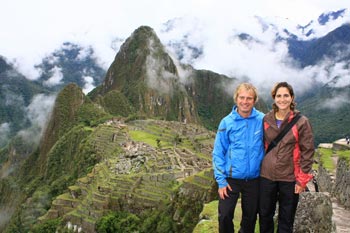 Hike Machu Picchu
Hike Machu Picchu
Machu Picchu is a 15th - century Incan site located on a ridge between the Huayna Picchu and Machu Picchu mountains in Peru. It sits 7,970 feet (2,430 meters) above sea level on the eastern slope of the Andes and overlooks the Urubamba River hundreds of feet below.
The site's excellent preservation, the quality of its architecture, and the breathtaking mountain vista it occupies has made Machu Picchu one of the most famous archaeological sites in the world today. The site covers 80,000 acres (32,500 hectares). Terraced fields on the edge of the site were once used for growing crops, likely maize and potatoes.
In 1911, explorer Hiram Bingham III, a professor at Yale University, visited the site and published its existence for the first time. He found it covered with vegetation, much of which has now been removed. The buildings were made without mortar (typical of the Inca), their granite stones quarried and precisely cut.
When Bingham discovered the site he was actually searching for Vilcabamba, the last capital of the Inca before their final defeat at the hands of the Spanish in 1572.
The explorer found Machu Picchu largely intact, having apparently never been visited by the Spanish conquistadors. In fact, the only reference to the site at all in Spanish documents is a mention of the word "Picchu" in a 1568 document, the text implying that it belonged to the Incan emperor.
An emperor's abode: Machu Picchu is believed to have been built by Pachacuti Inca Yupanqui, the ninth ruler of the Inca, in the mid-1400s. An empire builder, Pachacuti initiated a series of conquests that would eventually see the Inca grow into a South American realm that stretched from Ecuador to Chile. Many archaeologists believe that Machu Picchu was constructed as a royal estate of sorts, the presence of elite residences in the northeast sector of the site backing that idea up. It would have been used by the emperor and his family as a temporary respite, the site supporting a small number of year-round caretakers. Other examples of Inca royal estates are known in Peru. Interestingly, the dwelling of the emperor himself appears to be in the southwest part of the site, away from the other elite residences. A building known today as the "Temple of the Sun" is adjacent to it. A staircase running beside the royal compound leads to a plaza below, and the emperor was afforded a garden, a private bath and even a private toilet area - the only private one on site. Although Machu Picchu has a wall, modest gateway and dry moat (likely used for collecting rainwater) it doesn’t appear to have been set up with military purposes in mind, and there is no evidence that a battle of any sort was fought there.
Temple of the Sun: Machu Picchu has a number of structures that would have enhanced the spiritual significance of the site. One of them, the "Temple of the Sun," or Torreon, has an elliptical design similar to a sun temple found at the Inca capital of Cuzco. It is located near where the Inca emperor is believed to have resided at Machu Picchu. A rock inside the temple could have served as an altar. During the June solstice the rising sun shines directly into one of the temple's windows, and this indicates an alignment between the window, rock and solstice sun. Beneath the temple lies a cave, naturally formed, which the explorer Bingham referred to as a "royal mausoleum," although there's little evidence that it was used as such. A boulder carved into a stairway lies near the cave entrance and the underground chamber likely served a religious function of some form.
Principal temple & Intihuatana: A series of religious structures is located on the northwest of the site, bordering the plaza. One of the buildings, dubbed the "Principal Temple," contains a carved stone altar. When it was excavated by Bingham he found that it has a layer of white sand, something seen in temples at Cuzco, the Incan capital. A building adjacent to the "Principal Temple" is known as the "Temple of the Three Windows" and contains a large amount of broken pottery, ritually smashed it appears. But perhaps the biggest puzzle at Machu Picchu is a giant rock, named "the Intihuatana" by Bingham, after other carved stones found in the Incan empire. The stone at Machu Picchu is situated on a raised platform that towers above the plaza. Its purpose is a mystery, with recent research disproving the idea that it acted as a sundial. It may have been used for astronomical observations of some form. It may also be connected with the mountains that surround Machu Picchu.
Abandonment of Machu Picchu: Machu Picchu did not survive the collapse of the Inca. In the 16th century the Spanish appeared in South America, plagues afflicting the Inca along with military campaigns waged by conquistadors. In 1572, with the fall of the last Incan capital, their line of rulers came to end. Machu Picchu, a royal estate once visited by great emperors, fell into ruin. Today, the site is on the United Nations' list of World Hertiage sites.
8 - Day Inca Tour package. From $ 1,449.00 per person, based on double occupancy, Airfare not included.
 Visit the Pyramids of Egypt
Visit the Pyramids of Egypt
There are no more famous ancient sites within Egypt, or for that matter elsewhere in the world, than the Great Pyramids at Giza. They are, without question, the icon most associated with the Egypt. They have been both the main destination for tourists , and a source of imaginative thought to the world for over three thousand years.
However, there are actually over 100 pyramids in Egypt, many of which are relatively unknown to anyone who is not an ancient Egypt enthusiast. All but a very few are grouped around and near the City of Cairo, just south of the Nile Delta. Otherwise, only one royal pyramid is known in southern Egypt (at Abydos), that being the one built by Ahmose, founder of the 18th Dynasty and Egypt's New Kingdom. It may have also been the last royal pyramid built in Egypt.
Hence, major pyramids were not built throughout Egypt's ancient history. The Pyramid Age began with a burst of building, starting with the 3rd Dynasty reign of Djoser. Some of the early kings, most specifically Snefru, built more than one pyramid. Almost all of the kings added to their number through the end of the Middle Kingdom, with the possible exception of the First Intermediate Period between the Old and Middle Kingdoms. After the first Pharaoh of Egypt's New Kingdom, Ahmose, royal pyramid building by Egyptians ceased entirely. Somewhat abruptly the kings of the New Kingdom chose, rather than making their tombs completely obvious, to hide them in the hills of the West Bank of Thebes (modern Luxor).
However, smaller pyramids were constructed, for example in the Deir el-Medina necropolis, by private individuals. The Late Period Nubians who ruled Egypt also built relatively small pyramids with much steeper sides, though these were in fact constructed in Nubia itself. This tradition was carried on in Nubia after these southern rulers lost control of Egypt, and eventually, more pyramids were actually built in Nubia than Egypt, though on a much smaller scale.
Other pyramids in the world certainly exist, but their purpose, for the most part, was different than those of ancient Egypt. The most famous outside Egypt are probably those located in Mexico and to the south of Mexico, but these appear to have been built more as temples. In Egypt, all but a select few of the pyramids were built as tombs, sometimes to hold the physical body of a pharaoh (as well as other individuals), or to hold the soul of the deceased (as in the case of the small cult pyramids built next to the larger ones). Otherwise, the purpose of only a few small, regional stepped pyramids remains elusive.
While pyramids were, for the most part, tombs for the Pharaohs of Egypt, one must nevertheless question the reason that Egyptian rulers chose this particular shape, and for that matter, why they built them so large. Today, we believe that they chose the shape in order to mimic the Benben, a pyramid shaped stone found in the earliest of temples, which itself is thought to symbolize the primeval mound from which the Egyptians believed life emerged. This also connected the pyramid to Re, the Sun God, as it was he, according to some of the ancient Egypt mythology, who rose from the primeval mound to create life.
As far the great size of many of the pyramids in Egypt, we can really only surmise that the Pharaohs were making a statement about their own power and perhaps, about the glory and strength of their country. However, it should also be remembered that many of the latter pyramids were not nearly as large as the Great Pyramids at Giza (and elsewhere).
Pyramids evolved. The first of them was not a perfectly formed pyramid. In fact, the first Pyramid we believe that was built in Egypt, that of Djoser, was not a true pyramid at all with smooth sides and a point at the top. Rather, its sides were stepped, and the top of the pyramid truncated with a flat surface (as best we know). As the Egyptian pyramids evolved, there were failures as well glorious failures until finally, they got it right with what was probably the first smooth sided true pyramid built at Meidum. In fact, pyramids continued to evolve throughout their history, perhaps not always in outward appearances, but in the way that they were built and in the theology surrounding their construction. For example, towards the latter part of Egypt's Pyramid Age, Osirian beliefs seem to have had more and more impact on the arrangement and layout of the subterranean chambers.
However, soon after the first pyramids were built, their form became somewhat standardized. Royal pyramid complexes included the main pyramid, a courtyard surrounding the main pyramid, a much smaller cult pyramid for the king's soul, a mortuary temple situated next to the main pyramid, an enclosure wall and a causeway that led down to a valley temple. Some pyramid complexes included subsidiary, smaller pyramids for family members, and most were surrounded by some sort of tombs for family members.
The thinking on pyramids has evolved considerably over the years. Many of us who are a bit older were taught that the pyramids were built using Jewish slave labor, which is a fabrication of immense proportions. Most of the pyramids were built long before the Jews made their appearance historically and currently, many if not most scholars believe they were not built using slave labor at all (or perhaps a nominal number of slaves).
Otherwise, we can also dismiss offhand alternative theories related to aliens or some lost culture being responsible for pyramid building. There is just far too much evidence, including tools, drawings, evolutionary changes, and even worker villages that rule these far fetched ideas obsolete.
However, some mysteries remain, even in some of the best well known Pyramids. The most famous of them all, the Great Pyramid of Khufu, continues, year after year, to give up a few more secrets, and there doubtless remains much to learn from these Egyptian treasures. There may even be one or more pyramids yet to be discovered.
15 - Day Discover Egypt Tour Packages. From $ 1,106.00 per person, based on double occupancy. Airfare Extra.
 Safari through Kenya, Tanzania or Southern Africa
Safari through Kenya, Tanzania or Southern Africa
When most people think of safaris their thoughts automatically turn to Africa. An Africa safari holiday can take you to Kenya, Tanzania, Uganda, Rwanda, Botswana, Namibia, Zimbabwe, Zambia, South Africa and even West Africa. Go in search of the Big Five, the wildebeest migration or the endangered mountain gorilla whilst traveling through some of the great game parks of the world such as the Masai Mara, the Serengeti and Kruger National Park. Safari holidays give you the opportunity to experience some incredible wildlife encounters and are the ultimate in adventure travel!
We offer classic wildlife safaris,cultural tours, overland expeditions, family holidays, safari and beach, honeymoon and tailor-made holidays. Adventure holidays to Africa range from a week touring the famous game parks of Kenya to the ultimate Africa adventure traveling from South to East Africa over one and a half months or West Africa for 70 days! Perfect for couples, groups of friends or solo travelers, our safari holidays aim to offer you THE perfect wildlife experience. And remember, nothing gets your heart beating faster than hearing lions roar at night.
16 - Day Gorillas, Chimps and Game Park Tour. From $ 2,025.00 per person, based on double occupancy, Airfare Extra.
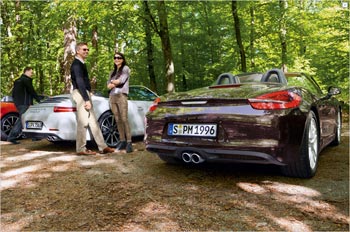 Drive a Porsche through the Black Forest
Drive a Porsche through the Black Forest
This 7-Day tour takes you to some of Germany's most beautiful and historical regions. A very memorable experience, especially with the right traveling companion. Offering a combination of meandering country roads and long stretches of motorway, an exhilarating drive is guaranteed. Stop off to visit the famous Neuschwanstein Castle and the Bavarian capital, Munich, along the way.
Enjoy the panoramic Alpine views at Lake Constance before continuing on to another impressive highlight: the Black Forest Ridgeway. Pass through some stunning scenery on your journey through historical towns such as Heidelberg and Rothenburg ob der Tauber. Savor every mile at the steering wheel of a car that has a rich heritage itself - on the road.
7 - Day Tours. From $ 4,499.00 per person, based on Double Occupancy. Airfare Extra.
 Attend the Masters in Augusta
Attend the Masters in Augusta
The Masters Golf Tournament, more commonly known as The Masters, is one of four major championships in professional golf. The tournament was started by Augusta National Golf Course designers Clifford Roberts and Bobby Jones, who worked with architect Alister MacKenzie to design one of the most challenging courses in the nation. Bobby Jones initially had the idea to design the course, as he wanted to build a golf course after he retired. The Augusta National Golf Course was officially opened in 1933.
The first ever Augusta National Masters Invitation Tournament was played in 1934. The tournament was won by Horton Smith, and the format of the first tournament was arranged so that golfers played holes 10 - 18 as the as the first nine, and 1 - 9 as the second nine. The very next year, the format was reversed, and has remained that way to present day.
In the 1935 tournament, Gene Sarazen hit a double eagle by sinking a shot from the fairway on the par 5 15th hole. Sarazen would go on to win the tournament in a 36 - hole playoff with Craig Wood. Four years later in 1939, the Augusta National Invitation Tournament would switch names to become what we now know as The Masters. The Masters was not played from 1943 - 45 due to WWII. Instead, the Augusta National grounds were used to raise cattle and turkeys to help the war effort.
In the 1960's and 1970's, Arnold Palmer, Gary Player and Jack Nicklaus dominated the tournament. These three key players won the event 11 times during that span of 20 years. In 1975, Lee Elder became the first black player to qualify for the Masters. He would play in the tournament fifteen years before the first black player was admitted as a member to Augusta National.
Between the years of 1980 and 2000, non - American golfers took eleven victories in those twenty years. This was the longest streak for non - American golfers in any major U.S. tournament since the early U.S. Open years. In 1986, Jack Nicklaus became the oldest player to win the Masters, winning for a sixth time at the age of 46. In 1997, Tiger Woods won the Masters by twelve shots at the age of 21, breaking the long - standing scoring record and also breaking the record for youngest player to win the Masters.
The Augusta National Golf Course has been adjusted several times over the years. In 1998, the course measured 6925 yards from tee to pin on all holes. The course was adjusted to 7270 yards for 2002 and to 7445 yards in 2006. These adjustments have brought several criticisms, but most competitive players have defended the course as freshly challenging.
Tickets for the Masters tournament are not super expensive rather, they are hard to get. Even the practice rounds are difficult to get into, as applications for practice round tickets must be made almost a year in advance just to get your name in a random drawing pool. Tickets to the tournament are only sold to members of a patrons list, which is closed. A waiting list for patrons has opened and closed periodically since 1972. As of 2008, The Masters has allowed patrons to accompany a child between the ages of 8-16 to the tournament for free.
2 - Day Practice Round Packages. From $ 1,600.00
2 - Day (Thursday/Friday) Round Packages. From $ 3,100.00
2 - Day (Saturday/Sunday) Round Packages. From $ 4,500.00
5 - Day Complete Tournament (Thursday-Sunday) Rounds. From $ 9,500.00
Prices are per person, based on double occupancy. Airfare Extra.
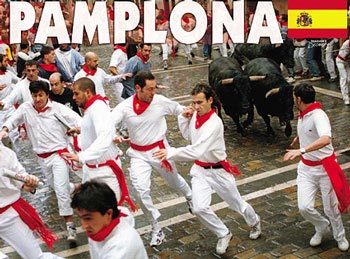 Run with the Bulls in Pamplona
Run with the Bulls in Pamplona
The fiestas of San Fermin are celebrated in Irunea/Pamplona, in the region of Navarra, every year from the 6th to the 14th of July. They have become internationally known because of the running of the bulls, where the bulls are lead through the streets of the old quarter as far as the bull ring by runners.
The fiestas are celebrated in honor of San Fermin, patron saint of Navarra, although the religious aspect would seem to have taken on a secondary role over the last number of years. Nowadays, the fiestas are seen as a mass gathering of people from all the corners of the world and where the partying, the fun and the joy of it all are the most outstanding ingredients.
The Encierro - The Running of the Bulls
The Encierro is the event at the heart of the Sanfermines and makes the fiesta a spectacle that would be unimaginable in any other place in the world. It was born from need: getting the bulls from outside the city into the bullring. The encierro takes place from July 7th to 14th and starts at the corral in Calle Santo Domingo when the clock on the church of San Cernin strikes eight o'clock in the morning. After the launching of two rockets, the bulls charge behind the runners for 825 meters, the distance between the corral and the bullring. The run usually lasts between three and four minutes although it has sometimes taken over ten minutes, especially if one of the bulls has been isolated from his companions.
Chants to San Fermin: The bull run has a particularly emotional prelude. It is when the runners, just a few meters up the slope from the corral where the bulls are waiting, raise their rolled newspapers and chant to an image of San Fermin placed in a small recess in the wall in the Cuesta de Santo Domingo. Against the strongest of silences, the following words can be heard: "A San Fermin pedimos, por ser nuestro patron, nos guie en el encierro dandonos su bendicion." (We ask San Fermin, being our patron saint, to guide us in the bull run and give us his blessing). When they finish they shout "Viva San Fermin! Gora San Fermin." This chant is sung three times before 8 am first, then when there are five minutes to go before 8 am, then three minutes and one minute before the gate of the corral is opened.
Rockets in the bullring: The third rocket, fired from the bullring, signals that all the bulls have entered the bullring. A fourth and final rocket indicates that all the bulls are safely in the corral located inside the bullring, and that the bull run has ended.
A fence of 3,000 parts: For security reasons, a double fence marks out the route of the bull run through the streets. It is made of over 3,000 wooden parts (planks, posts, gates, etc.). Part of the fence stays put throughout the fiesta but other sections are assembled and disassembled every day by a special brigade of workers.
The role of the pastores: A large number of pastores (bull "shepherds") cover the entire bull run. They place themselves behind the bulls, with their only protection being a long stick. Their main role is to stop the odd idiot from inciting the bulls from behind, to avoid the bulls turning round and running backwards, and to help any bulls that have stopped or have been separated from their companions to continue running towards the bullring.
The dobladores: Other key people in the bull run are the dobladores, people with good bullfighting knowledge (sometimes ex-bullfighters) who take up position in the bullring with capes to help the runners "fan out" (in other words, run to the sides after they enter the bullring) and "drag" the bulls towards the corral as quickly as possible.
The two groups of mansos (bullocks): The six fighting bulls that will take part in the evening bullfight start the run accompanied by an initial group of mansos, which act as "guides" to help the bulls cover the route. Two minutes after leaving the corral in Santo Domingo, a second group of bullocks (the so-called "sweep-up" group), which are slower and smaller than the first one, are let out to lead any bulls that might have stopped or been left behind in the bull run towards the bullring.
Useful information about the bull run: The encierro is an unrepeatable experience for spectators and runners alike. It is a spectacle that is defined by the level of risk and the physical ability of the runners. An inexperienced runner should learn about the characteristics of this dangerous "race" (although it should not be considered as a race) before starting, and also about the protective measures to be taken for his/her own safety and that of the people running alongside. Not everyone can run the encierro. It requires cool nerves, quick reflexes and a good level of physical fitness. Anyone who does not have these three should not take part. It is a highly risky enterprise. Runners should start somewhere between the Plaza del Ayuntamiento (City Hall Square) and the pink-slab Education building in the Cuesta of Santo Domingo, and they should be there before 7:30am because entry to the run is closed from that time on. The rest of the run, except for the stretch mentioned above, must be completely clear of runners until a few minutes before 8am.
4-Day Deluxe Tour Package. From $ 2,250.00 per person based on double occupancy. Airfare Extra.
 Travel to Wimbledon
Travel to Wimbledon
So you think you know Wimbledon? Tennis's most prestigious grand slam event gets underway in late June, and finishes up in early July. Below is some history, as well as some little - known facts about the tourney?
The first Wimbledon took place in 1877 solely as an amateur competition. Men's singles was the only event that took place. There were 22 competitors and the championship was won by Spencer Gore. A few hundred spectators were in attendance.
Women's singles and men's doubles events began seven years later, in 1884.
May Sutton of the United States became the first non-European champion in 1905 when she captured the women's singles title.
- Charlotte (Lottie) Dod became the youngest player ever to win a Wimbledon singles event when, in 1887, she won at the age of 15 years, 285 days. In 1996 Martina Hingis became a Wimbledon doubles champion at 15 years, 282 days. And by the way, Dod was also a silver medalist in archery at the 1908 Olympics, a member of the British national field hockey team in 1899, and the British Amateur golf champ in 1904.
- During World War II, a bomb ripped through Centre Court at the All England Club and 1,200 seats were lost. Fortunately, they weren't filled at the time. Play finally resumed in 1946 but it wasn't until 1949 that the area was back in top shape.
- American Althea Gibson became the first black player to win a Wimbledon singles championship when she captured the title in 1957. She successfully defended her title a year later. She was named Associated Press Female Athlete of the Year in both years.
- In 1985, Boris Becker accomplished three feats: he became the youngest male singles champ (17 years, 227 days old), the first German champ, and the first unseeded champ.
- There are currently 20 grass courts available for play at the Wimbledon complex. The Number 1 Court now comes complete with large fans at either end to dry out the court in case of rain. There are also five red shale courts, four clay courts, and five indoor courts for club members.
- The last married woman to win the women's singles championship was Chris Evert Lloyd in 1981.
- A wooden racket was last used at Wimbledon in 1987.
- The 2012 prize purse for the men's and women's singles winners is 1,150,000 GBP, an increase of 50,000 GBP (4.5%) over 2011. In 1968, the year of the first "open" championships, the prize money was 2,000 GBP for the male champion and 750 GBP for the female champion.
- Aside from cash, the women's champ also receives a silver gilt salver (a round, disk-like platter) that was made in 1864. The men's winner receives a silver gilt cup from 1887. Both are actually displayed at the Wimbledon museum for most of the year.
- Keep your eyes on the ball! The records for fastest serve are Taylor Dent, clocked at 148 mph (2010) and Venus Williams with 129 mph (2008)
- The top-selling item in the Wimbledon gift shop in 2012: 18,000 yellow mini tennis ball key rings.
4 - Night Opening Round Packages. From $ 3,195.00
4 - Night Middle Round Packages. From $ 3,675.00
3 - Night Men's and Women's Finals Packages. From $ 8,995.00
Prices per person based on double occupancy, Airfare Extra.
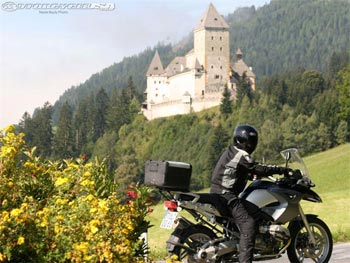 Cruise on A BMW Motorcycle through the Alps
Cruise on A BMW Motorcycle through the Alps
The Alps and Lakes motorcycle tour takes you through a beautiful part of European motorcycle paradise; the Alps. The contrast between the beautiful lakes in southern Germany and Austria and the towering mountains that reach up to more than 10,000 ft. is nothing less than breathtaking.
This area is the famous background for the movie "Sound of Music". This vacation offers a little bit of everything: beautiful and relaxing rides through the valleys; some mountain roads and passes; and great vistas and sights, including King Ludwig's castle, Herrenchiemsee, and the historic city of Salzburg. The tour consists of five riding days, one of them is a rest day - which means that you stay two nights at the same hotel.
This is a great opportunity to explore a little bit more, ride around the countryside, walk through town, meet the locals and sample some of the local food. The tour will take you through Germany and Austria, and on the rest day you can even add Italy to your list if you are so inclined.
7 - Day Vacation with 5 Days of Riding. From $ 3,700.00 per person. Airfare Extra.
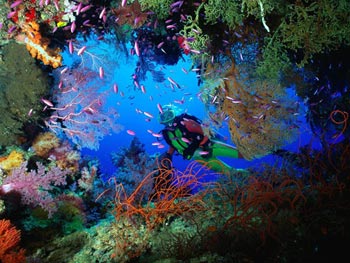 Dive the Great Barrier Reef
Dive the Great Barrier Reef
A Natural Wonder
One of Australia's most remarkable natural gifts, the Great Barrier Reef is blessed with the breathtaking beauty of the world's largest coral reef. The reef contains an abundance of marine life and comprises of over 3000 individual reef systems and coral cays and literally hundreds of picturesque tropical islands with some of the world's most beautiful sun-soaked, golden beaches.
The Great Barrier Reef is one of the seven wonders of the natural world, and pulling away from it, and viewing it from a greater distance, you can understand why. It is larger than the Great Wall of China and the only living thing on earth visible from space.
5 - Day Dive Package with up to 3 dives per day. From $ 1,500.00 per person, based on double occupancy. Airfare Extra.


